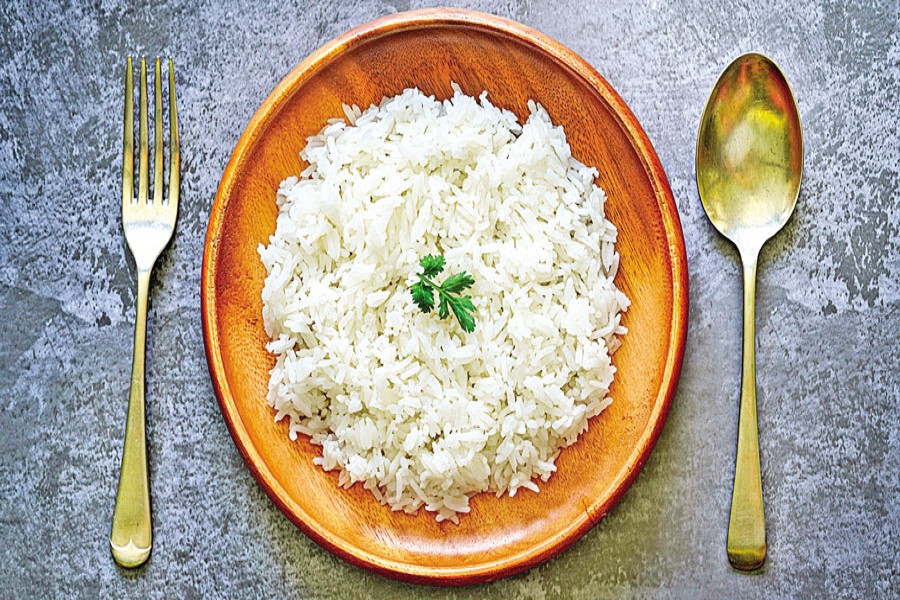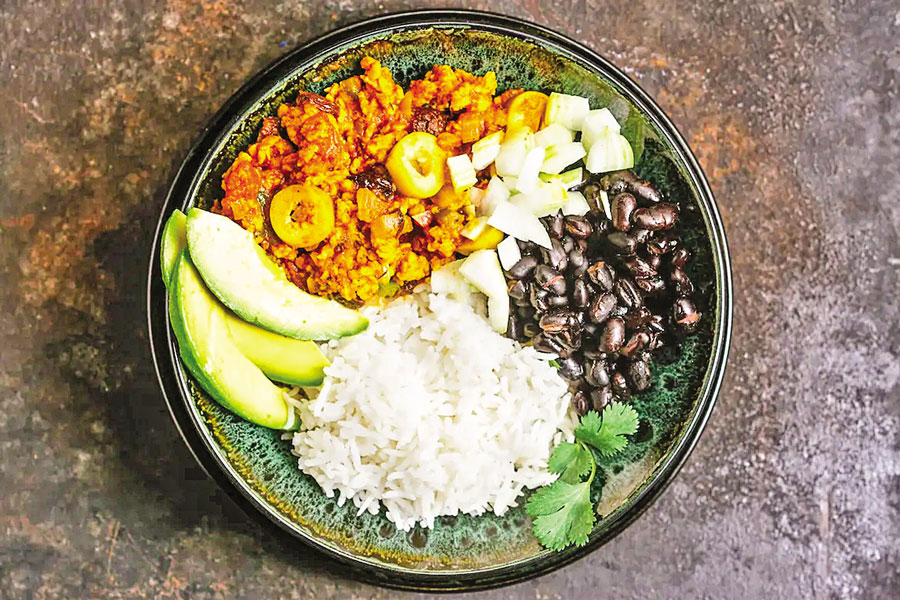
Cutting carbs
A periodic approach to reduce rice consumption
Reducing rice consumption in a periodic way within three months
NOWSHABA ACHAL | Wednesday, 4 September 2024

 In Bengali culture, rice is more than simply food; it's a daily staple, a habit, and a source of comfort. However, many people are thinking about cutting back on their use of white rice as they become more aware of the health risks of high carbohydrate consumption. Reducing rice intake is a big step toward improving overall health, controlling blood sugar, or losing weight.
In Bengali culture, rice is more than simply food; it's a daily staple, a habit, and a source of comfort. However, many people are thinking about cutting back on their use of white rice as they become more aware of the health risks of high carbohydrate consumption. Reducing rice intake is a big step toward improving overall health, controlling blood sugar, or losing weight.
Why reduce carbohydrate intake?
Although carbohydrates are the main source of energy, overconsumption of carbs can result in weight gain, blood sugar rise, and an increased risk of chronic illnesses. Refined carbohydrates like white rice have a high glycemic index, which raises blood sugar levels quickly. If taken in significant amounts over an extended period, this can result in insulin resistance, obesity, and type 2 diabetes. Limiting the intake of rice and other refined carbs might help you feel lighter, get in better shape, improve your energy level and boost your confidence.
A periodic plan
Reduced rice consumption doesn't have to be immediate or drastic because we Bengalis are habituated to eating rice. Taking it step-by-step makes the change easier and more viable in the long term. A pro tip is to eat on a smaller plate than the regular one.
Month 1: It's not necessary to give up rice completely to cut back on your intake. Start by cutting the amount of rice you eat by 25-30%. For instance, begin with one and a half cups of rice if you usually eat two cups at a meal. Your body will adjust to this progressive reduction without experiencing a sense of deprivation. Vegetables high in fibre can replace the reduced serving of rice. Leafy greens like spinach, root vegetables, and gourds are great options. They give your food additional bulk so you can feel satisfied without consuming more carbohydrates. Use chicken, eggs, lentils, or fish (rui, ilish) to boost the protein content of your dishes. Dry fruits like Almonds, peanuts, dates, raisins and flaxseeds are great for snacking. They can be added to salads or yoghurt. Vitamins and natural sweetness are provided by fruits such as guava, apple, banana, papaya, etc.
Month 2: By the second month, you may start reducing your rice intake and introducing alternatives because your body will have become more used to a decreased intake. Reduce your rice consumption to half of what you typically eat. Use whole grains like brown rice. Roti made with red wheat is nutritious, although portion size should be controlled. It is sufficient to have two rotis. Dishes prepared with chia seeds are a great option. Besides, try to consume lots of vegetables in curry or salad. Also, proteins like white meat, fish, and eggs are needed to gain energy. If you get hungry between meals, have dry and seasonal fruits.
Month 3: The last month's goal is to eat less rice while adding more nutrients to your diet. Limit the amount of rice you eat to a half cup and only eat it a few times weekly. Eat more vegetables, lean meats, fish, eggs, and healthy fats in your meals. For instance, grilled fish served with a side of spinach, a small serving of lentil, cucumber, or fruit salad may provide a fulfilling and healthy meal. Additionally, the cooking method is crucial. Try using less oil when cooking proteins and veggies. Cooking veggies should be done to preserve their nutrients and avoid overcooking them. Stay away from deep-fried foods.
Continuing a balanced diet and lifestyle
Avoid snacking: Try to avoid the habit of snacking between your meals. Instead of eating unhealthy snacks, explore healthy alternatives like salads, low-fat yoghurt, chia seeds, or puddings. Fruits and dry fruits are also great snacks.
Keep yourself hydrated: Eating a nutritious diet requires staying well hydrated. Drink lots of water throughout the day, and consider trying some herbal drinks, such as green tea, which can help with digestion and metabolism.
Meal time: Consider the time of your meals. Try to eat every meal on time. Eating smaller yet more frequent meals can prevent overeating. Consume dinner no later than two hours before bedtime.
Eat slowly: Chew your food slowly and savour each bite. Slow eating also improves digestion. Besides, you may avoid eating too much by identifying when you are full because you eat slowly.
Refrain from distractions: Do not eat while working, on the phone, or watching TV. Pay attention to what you eat to improve pleasure and manage portion sizes.
Lifestyle adjustment: Include moderate activity for at least thirty minutes per day. Try to walk for at least 10 minutes after having the meal. Weight gain and overeating can result from ongoing stress. Engage in stress management practices such as deep breathing exercises, meditation, or outdoor time. Sleep for seven to eight hours every night to help your body's natural processes.
It can be difficult to cut back on rice intake, particularly in a society where rice is eaten as a staple. Still, it is possible to do this gradually. You may incorporate a range of rich nutrient alternatives into your diet and reduce rice intake by adhering to a systematic and stepwise plan. Switching to a balanced diet that uses less rice is both practical and achievable because there are so many wholesome alternatives in Bangladesh. However, sticking to a healthy diet requires persistence and determination.
nowshaba01achal@gmail.com